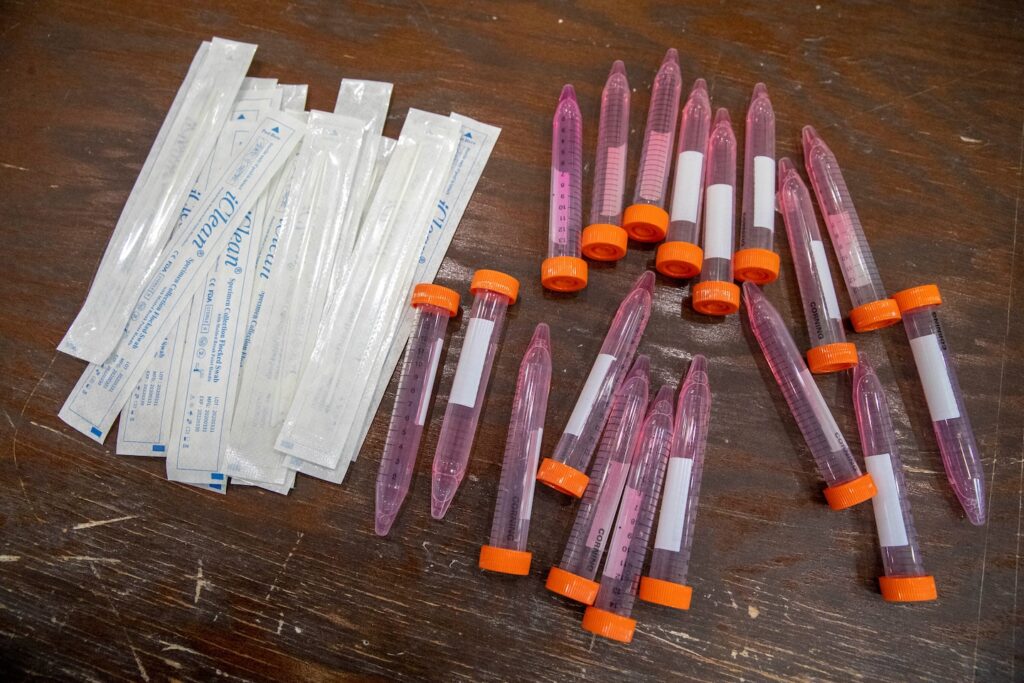Nursing homes that tested staff most often experienced 26 percent fewer resident deaths than nursing homes that tested less frequently, according to the study.
The results highlight failings of government and industry to protect residents from a known viral threat, while providing policy and health system leaders with data that can inform the approach for future pandemics.
Swabbing staff and then blocking infected people from bringing the virus into nursing homes was seen as a crucial strategy at protecting residents from infection and death. But in actual practice there were huge lapses in testing across the country, even after tests became more widely available.
Of the 164,000 U.S. deaths among nursing home residents, the biggest surge occurred in the second wave of infection in the fall and winter of 2020/2021. More than 6,000 nursing home residents died in the single week that ended Dec. 20, 2020.
Researchers at Harvard’s T.H. Chan School of Public Health, University of Rochester Medical Center and the Anderson School of Management at the University of California at Los Angeles set out to document how many lives could have been saved with a more rigorous approach to testing staff. They analyzed test, infection and death data reported by nursing homes to the Centers for Medicare and Medicaid Services.
The findings indicate that a stronger communications and logistical effort by government leaders, regional health systems and nursing homes would have prevented infections and saved thousands of lives, an author of the study, Michael Barnett, said in an interview. Barnett is a primary care doctor and researcher at Harvard.
“The messaging around how to test and who to test and why and how often was very confusing for nursing homes. It was a big mess,” he said. Long turnaround times for the results of PCR tests and the poorly organized rollout of antigen tests for nursing homes had disastrous consequences, he said. Extrapolating the potential 427 lives saved per week with better testing over a broader time frame of 25 or 30 weeks in 2020 and early January 2021, Barnett added, “that’s tens of thousands of potential deaths that could have been averted.”
The Department of Health and Human Services did not respond to a request for comment.
The nursing home industry’s top trade association said this week that it was hamstrung by a lack of tests and prioritization from government leaders.
“In the early stages of the pandemic, long term care providers were begging public health officials for testing,” David Gifford, chief medical officer for the American Health Care Association/National Center for Assisted Living, said in an email. “It took months for residents and staff of long term care facilities to be made the highest priority to access tests and process results, despite our population being the most vulnerable.”
He added, “To prepare for the next pandemic, we need public health officials to make long term care a priority. As we saw during the pandemic, even nursing homes with outstanding infection prevention efforts could not stop this incredibly contagious and vicious virus.”
In August 2020, the Trump administration told nursing homes to test asymptomatic staff members according to the spread of the coronavirus in their county: twice a week if the spread of the virus in the facility’s county was high (over 10 percent positivity rate), once a week if the spread was medium (5 percent to 10 percent positivity rate) and once a month if the spread was low (below 5 percent positivity rate). In September 2022, the Biden administration said routine screening of asymptomatic staff was no longer required.
Barnett said that slow turnaround for results of PCR tests made them virtually meaningless, because an asymptomatic staffer would have had multiple contacts with residents in the days waiting for results. The government said in July and August 2020 that it would send rapid antigen tests to all nursing facilities, but some states banned nursing homes from using them, sowing confusion.
It is vital that testing procedures be tightened to prevent nursing home infections and deaths, along with greater access to personal protective equipment, improved ventilation and strict adherence to hygiene rules, said Deb Burdsall. Burdsall is an infection prevention specialist in Illinois and board member of the Association for Professionals in Infection Control and Epidemiology who has worked in long-term care for more than 40 years.
“It’s a core principle in infection prevention to know what is out there before it gets into your building,” she said. “The staff, especially pre-vaccine, they were the principal carriers of covid into the residents. If you test them before they work … and they are not interacting with residents, the residents don’t get sick and they’re not going to die.”
But even such basic infection control rules could not overcome the willful ignorance that some nursing home operators espoused, Burdsall added.
“There was a political component. I had some administrators telling me it was fake news,” she said. “If I had somebody telling me they didn’t know what their residents were dying from, because it couldn’t have been covid because it was fake news, then what do I do with that?”

